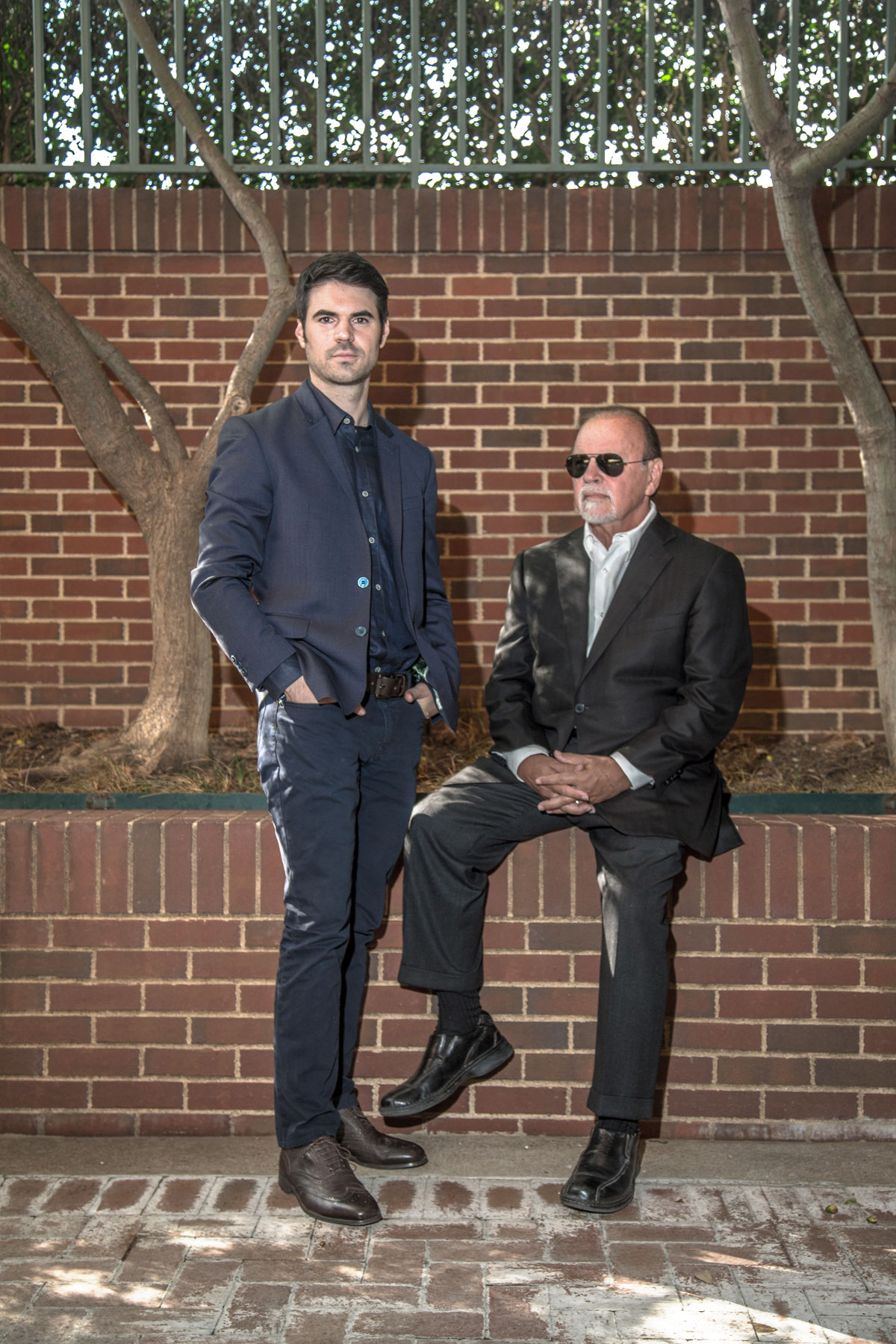In the high-flying world of Dallas real estate, Jack O’Brien is a pretty low-key guy. You won’t find him making the networking rounds at industry events, and the low-rise North Dallas building from which he runs O’Brien Architects is fairly nondescript.
When we meet, he pushes aside piles of blueprints to make room on a table in his office. He answers my interview questions in a slow and thoughtful manner. He seems a bit baffled why anyone would be interested in his story.
It all belies the fact that O’Brien and his team are the dream-makers behind some of the region’s most imaginative real estate projects.
Among them is Grandscape, a 433-acre entertainment district anchored by a massive Nebraska Furniture Mart store that’s under construction along State Highway 121 in The Colony. When it opens next spring, the store is expected to employ more than 2,000 people and attract up to 10 million shoppers annually. About 18 million people are expected to visit Grandscape each year.
Nebraska Furniture Mart, a Berkshire Hathaway company, is developing the project, giving it the opportunity to both serve and exponentially benefit from the shoppers its store will attract. Initial plans call for 2.6 million square feet of retail, entertainment, and office space, along with more than 300 multifamily units.
Another high-profile O’Brien project is Cowboys Alley, the glitzy, 91-acre mixed-use development that surrounds the Dallas Cowboys’ new headquarters and events center in Frisco. Along with the masterplan for the project, which will sit off the Dallas North Tollway at Warren Parkway, O’Brien designed the retail and entertainment components and parking garages.
The architecture firm has earned a reputation for its mixed-use work, O’Brien says. “We get in most doors,” he says. “We don’t compete on a fee basis. We’re not the highest and not the lowest—we just try to do what’s fair. We don’t try to retire off one job.”
The firm’s masterplanning experience and work it previously did for Blue Star Land, a real estate company owned by Cowboys owner Jerry Jones and family, made O’Brien a good fit for the Frisco complex, says Charlotte Jones Anderson, the team’s executive vice president and chief brand officer. “The project is very important to the Cowboys, and we wanted to put together only the best team,” she says. “The goal is for a world-class family destination, and O’Brien has shown these talents in the past.”
Early Epiphany
Jack O’Brien had a “traditional Irish Catholic” upbringing in the New Jersey borough of Madison, which sits just 25 miles west but a world away from downtown Manhattan. His family of six—O’Brien has an older brother and two younger sisters—lived in a small apartment. From the age of 7, he did odd jobs to earn money, mowing lawns or shoveling snow. “We didn’t consider ourselves poor,” he says. “But if you wanted something, a new sweater or a jacket, you knew you had to go out and earn it.”
His father played in a dance band in the 1940s and ’50s. O’Brien is musically inclined as well; he played French horn in school and was in a drum and bugle corps. To this day, he enjoys playing the guitar, both classical and flamenco.
As a child, O’Brien loved to draw and tinker with things. His grandfather lived up the street and had a workshop in his basement. The two would spend hours building things together; O’Brien still has a little bank he made when he was young.
“We feel that every project has a story behind it,” says Jack O’Brien. “It’s important for the architect to express that story.”
He took drafting classes in high school, then became the first in his family to attend college, paying his own way. He chose Texas A&M—the least expensive of three schools he considered—where he served in the Corps of Cadets. By Thanksgiving of his freshman year, a few days after President John F. Kennedy was shot in Dallas, O’Brien was so homesick, he hitchhiked all the way back to Madison—something he’d do another five or six times while in school. “It was an adventure,” he says, “and it builds a lot of character out there on the road by yourself, walking the length of Little Rock, Arkansas, in the middle of the night, or going through Nashville while the wind whips around you.”
After graduating, O’Brien joined an architecture firm in College Station, Matthews & Associates, and worked on several buildings for A&M. It was there that he learned the practical side of the business, down to the impact of using different types of nails and screws.
Before long, O’Brien moved to Dallas, a town he knew from trips to Louann’s dance hall on Greenville, a favorite weekend haunt from his college days. He designed a lot of apartments, had a short stint at HKS Inc., then in 1974 launched his own firm with a colleague. The two-man shop eventually grew to three partners. They operated out of Bryan Tower, in the same building as Trammell Crow. “We figured we’d bump into enough people to finally get some clients,” O’Brien says.
The company ended up doing work for Trammell Crow, Hines, and others, growing to 32 people by the time O’Brien left in 1978 to go solo. Lincoln Property Co. was just starting its commercial division and became an early client. It was a good match; O’Brien figures he has done about 400 projects for Lincoln during the last 35 years.
“Dallas has a culture of accepting new faces and supporting new businesses,” he says. “People who are willing to work hard can do well here.”
Most architecture firms specialize in one product type, be it office, industrial, retail, multifamily, or hospitality. O’Brien did—and does—it all. The breadth of experience perfectly positioned the firm for the mixed-use craze that’s now sweeping the real estate industry. It’s not just understanding the different types of buildings, but how they interact, O’Brien says.
When it comes to design, he is still influenced by the traditional, late 1800’s-era architecture of his hometown, but O’Brien and his firm don’t stick to a particular style. He says it’s important to consider a project’s environment and culture, and how it will interact with other structures around it and the people who will use it.
“We feel that every project has a story behind it,” O’Brien says. “It’s important for the architecture to express that story.”
The conviction led O’Brien to create a “vision book” practice within the firm—a process developed by his son, Sean, who serves as senior design manager. Simply put, it takes clients’ dreams and shapes them into a coherent, visual story that combines masterplanning with branding and architecture—all conveyed through print (luxurious 11×17-inch books) and video.
The service line, promoted by the clever tagline, “We see what you’re saying,” gives the firm a competitive advantage, O’Brien says. It also created an income stream that helped when development dried up during the Great Recession. That, in turn, helped the firm avoid layoffs during the downturn.
That’s critically important to O’Brien, as the majority of his team has been with him for 12 to 15 years—some as many as 30 years. The family culture at the firm is something O’Brien knows a little about. He has seven children—some biological, some not—from three marriages. Yet he and his wife of more than 20 years, Victoria, have created a cohesive and extraordinarily tight-knit brood.
Daughter Stephanie and son Patrick both worked for the firm before moving to other cities. Sean has been with the company since 2009. It took him a while to figure out that architecture was his calling, he says.
“I had been around it my whole life and wanted to try something different,” Sean says. “I tried business, I tried acting, I tried art school.” Then, on a whim, he took an entry-level architecture class at Texas Tech, and ended up loving it.
The elder O’Brien says he considers himself the “luckiest guy in the world” to be working with his son, whom he expects to take over the family business one day.
The firm has come a long way, he says. “We started out 40 years ago doing warehouses; now we’re working on Nebraska Furniture Mart and with the Dallas Cowboys. The mixed-use work we’re doing is exactly what we want to do, and I think we have reached a certain level in terms of the quality of projects. Our clients are highly sought-after, and we take care of them. We’re driving the ship more than we did in the past; we’re creating our own direction.”







